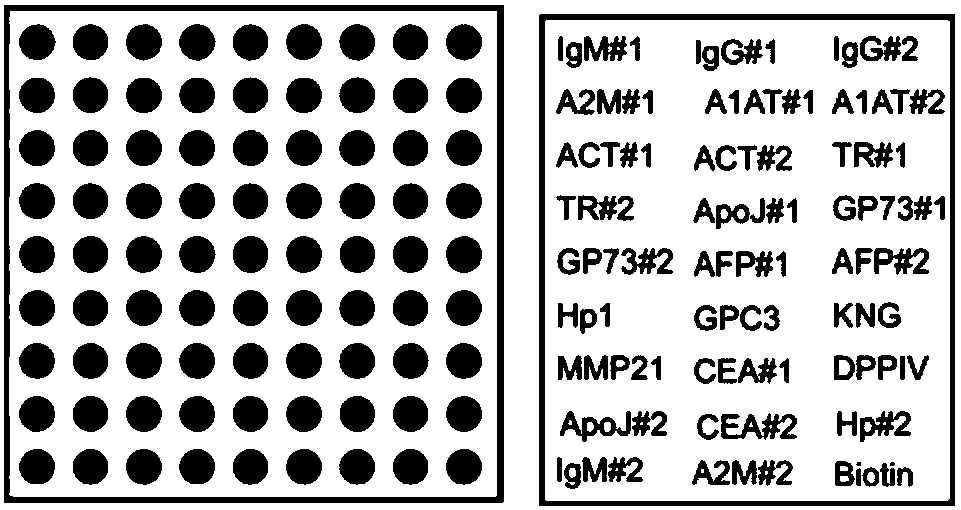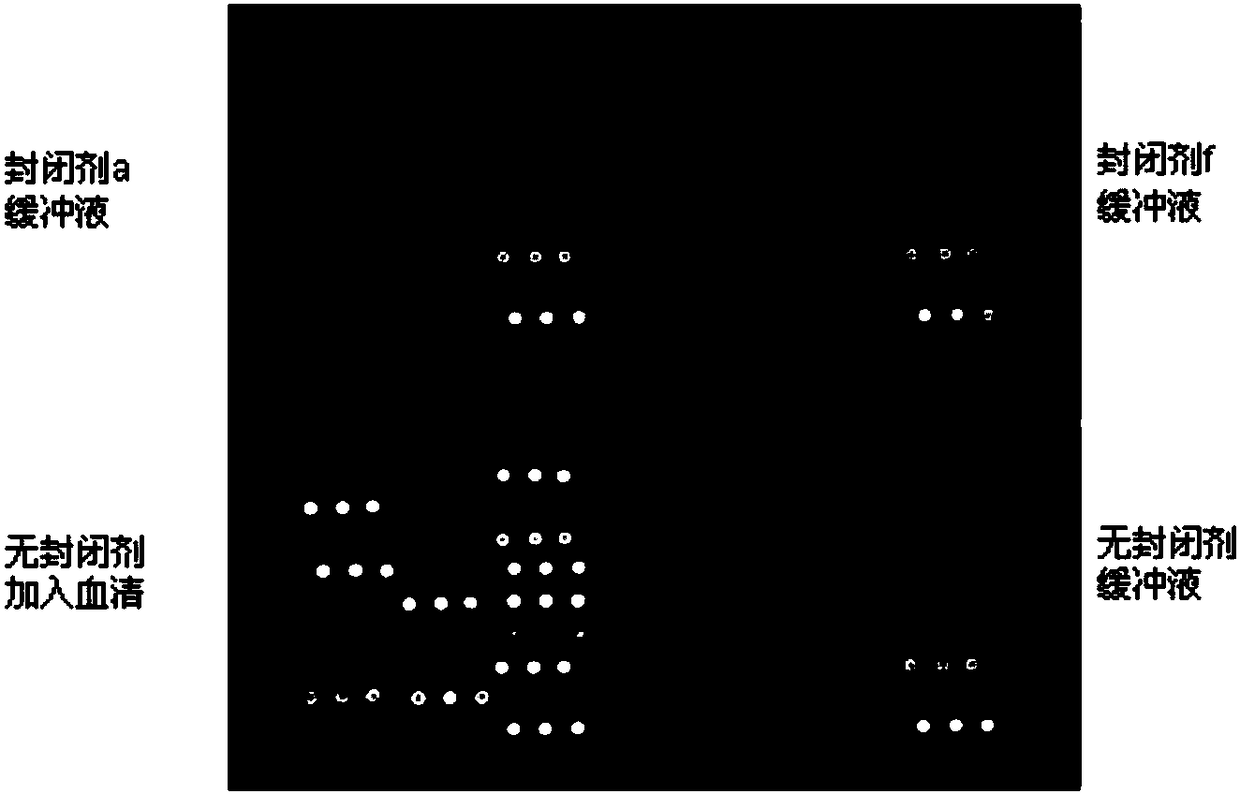Application of compound as blocking reagent for glycosyl on antibody
A technology for blocking reagents and compounds, applied in the field of protein glycosyl detection, can solve problems such as interference in detection results, and achieve the effects of accurate detection and analysis, good activity, and shortening the reaction process.
- Summary
- Abstract
- Description
- Claims
- Application Information
AI Technical Summary
Problems solved by technology
Method used
Image
Examples
Embodiment 1
[0067] Coat the antibody onto the surface of the antibody chip, add 150 mmol of sodium periodate, add 20 mmol of pH7.0 sodium acetate buffer, and react at 4°C for 2 hours; add blocking reagent a, and use the same at room temperature The buffer was incubated for 1 hour; the surface of the antibody chip was blocked with calf serum for 1 hour; at room temperature, biotin-labeled lectin AAL was added and incubated for 1 hour; then Cy3-labeled streptavidin was added and incubated for 1 hour Carry out microarray scanning detection to the prepared antibody chip, detect the amount of the combined lectin with Cy3 fluorescent dye, the detection result sees image 3 The upper left subarray in .
[0068] figure 2 For the array map of antibodies, each antibody was replicated 3 times to generate 3 dots with a diameter of 130 μm. Each point is represented by (column, row), such as the first antibody in the first row is represented as IgM#1(1,1)(2,1)(3,1).
[0069] image 3 BiotinBSA(7,9...
Embodiment 2
[0073] Coat the antibody onto the surface of the antibody chip, add 150 millimolar sodium periodate in 20 millimolar pH7.0 sodium acetate buffer and react at 4°C for 2 hours; add blocking reagent f, and use the same buffer at room temperature The solution was incubated for 1 hour; the surface of the antibody chip was blocked with calf serum for 1 hour; at room temperature, biotin-labeled phytohemagglutinin AAL was added and incubated for 1 hour; then Cy3-labeled streptavidin was added and incubated for 1 hour; Perform microarray scanning detection on the prepared antibody chip, and use Cy3 fluorescent dye to detect the amount of bound lectin. The detection results are shown in image 3 The upper right subarray of , figure 2 An array map of antibodies.
[0074] Such as image 3 As shown in the upper right subarray, when the glycosyl on the antibody was blocked with the blocking agent f, most of the antibodies incubated with phosphate buffer did not develop color, indicating ...
Embodiment 3
[0077] Coat the antibody to the surface of the antibody chip; block the sugar group on the antibody with blocking agent a or blocking agent f, and block the surface of the antibody chip with calf serum for 1 hour; add serum or buffer, at room temperature, add biotin Labeled recombinant lectin AAL (for detection of trehalose), wild plant lectin AAL (for detection of trehalose), phytohemagglutinin RCA120 (for detection of glucose amide), or phytohemagglutinin SNA (for detection of sialic acid), incubated for 1 hour; Add Cy3-labeled streptavidin and incubate for 1 hour; perform microarray scanning detection on the prepared antibody chip, and detect the amount of bound lectin with Cy3 fluorescent dye.
[0078] Such as Figure 4 As shown, after blocking the sugar group on the antibody with blocking agent f, when the recombinant phytohemagglutinin AAL (AleuriaAurantia Lectin orange reticulocyte agglutinin) is used to detect, the positive control wells develop color, and the negative...
PUM
 Login to View More
Login to View More Abstract
Description
Claims
Application Information
 Login to View More
Login to View More - R&D
- Intellectual Property
- Life Sciences
- Materials
- Tech Scout
- Unparalleled Data Quality
- Higher Quality Content
- 60% Fewer Hallucinations
Browse by: Latest US Patents, China's latest patents, Technical Efficacy Thesaurus, Application Domain, Technology Topic, Popular Technical Reports.
© 2025 PatSnap. All rights reserved.Legal|Privacy policy|Modern Slavery Act Transparency Statement|Sitemap|About US| Contact US: help@patsnap.com



